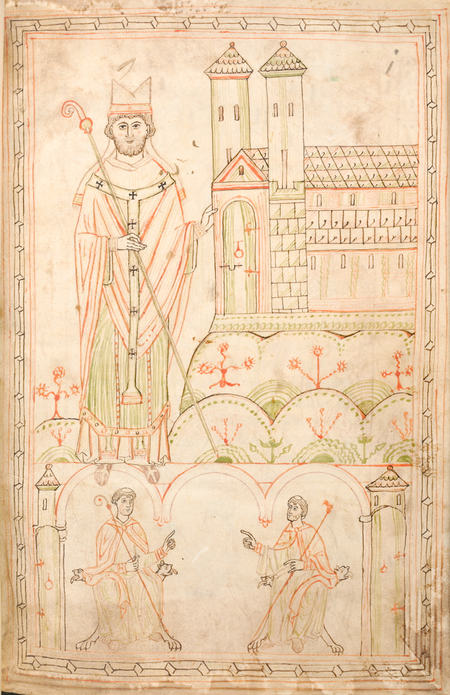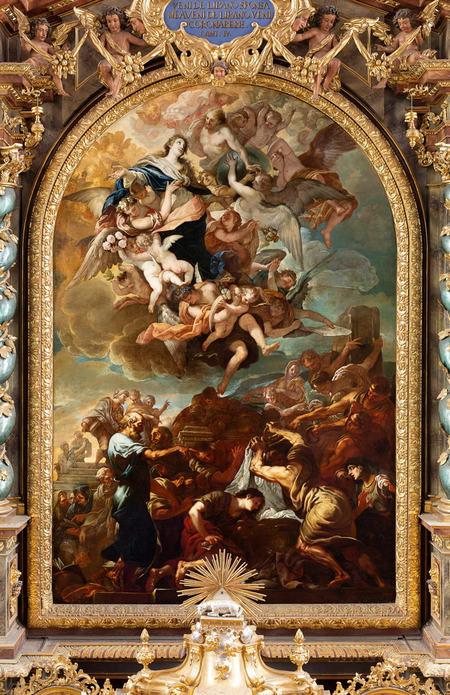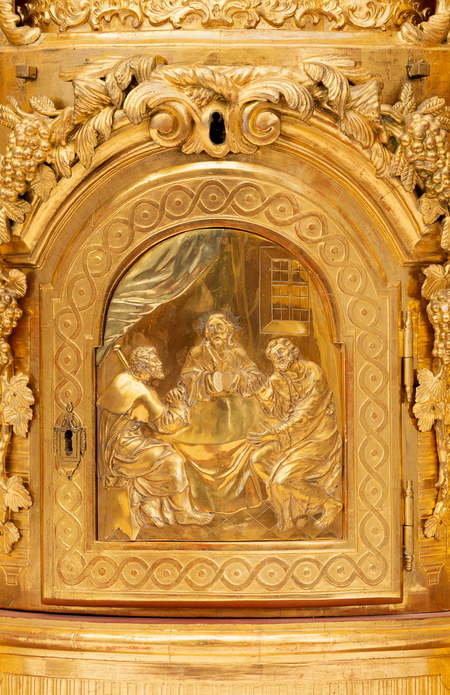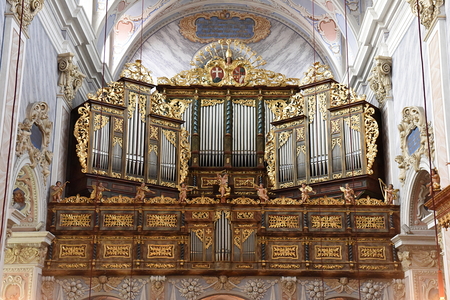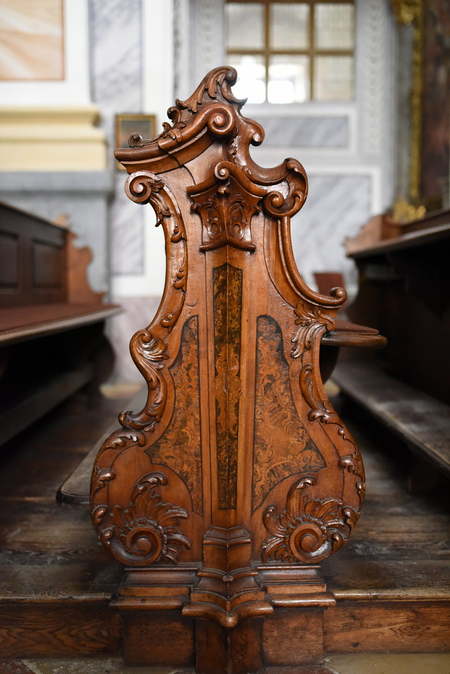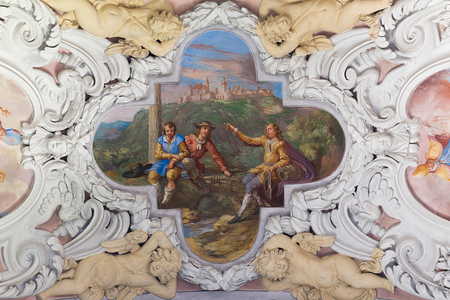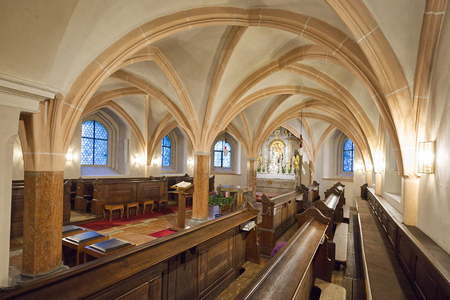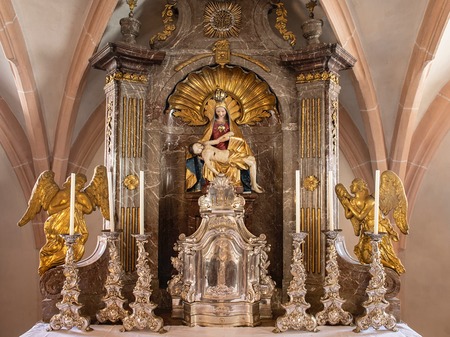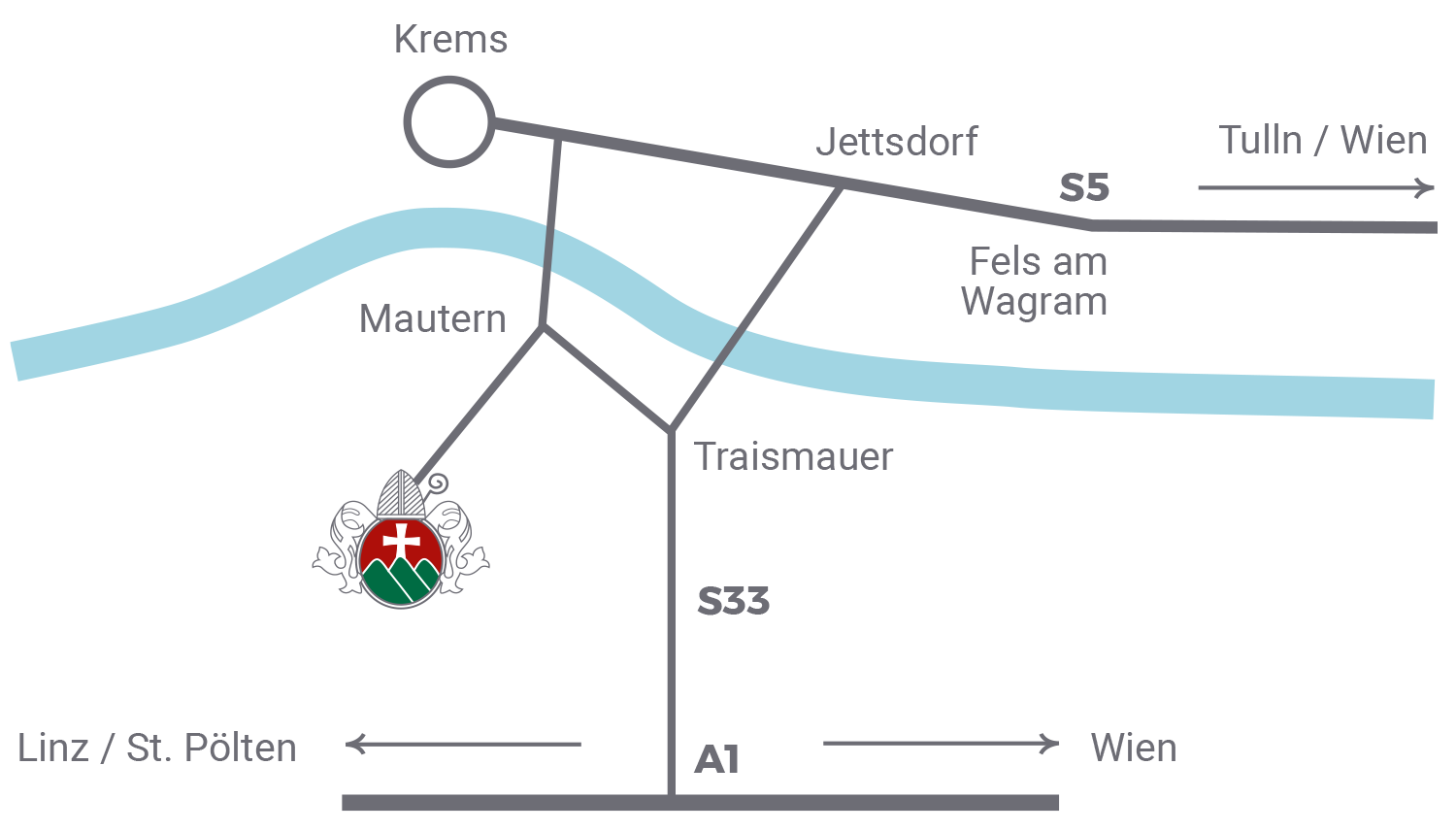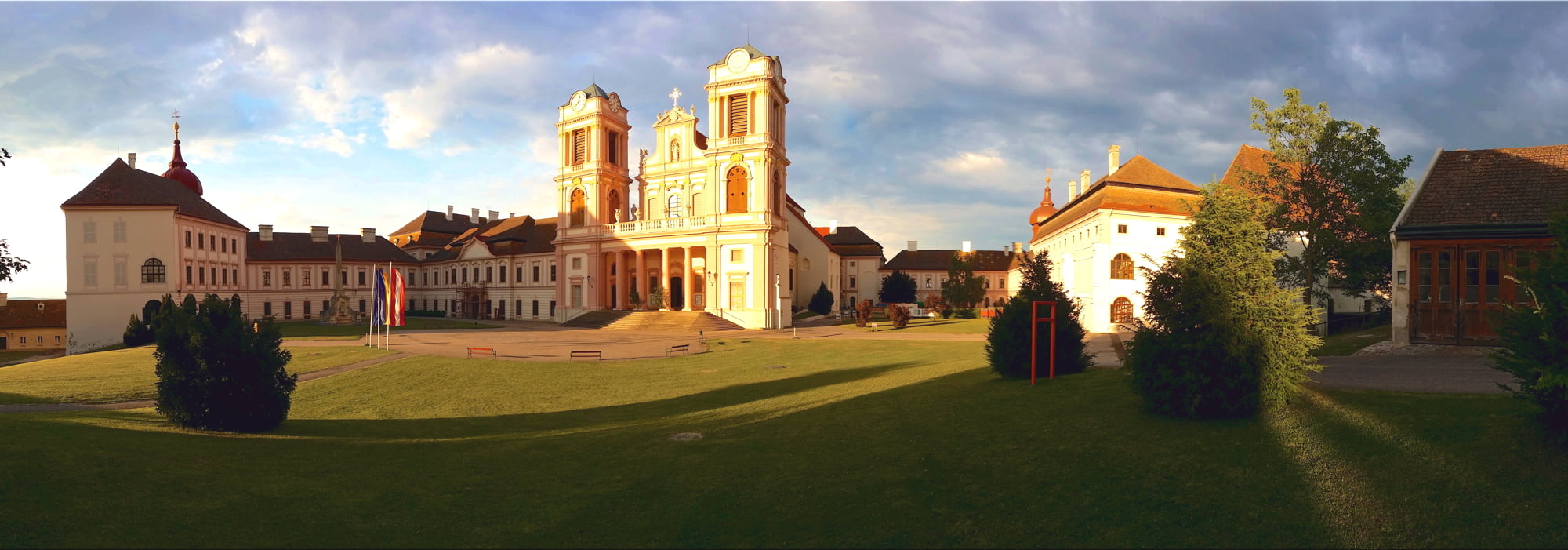
Abbey Church
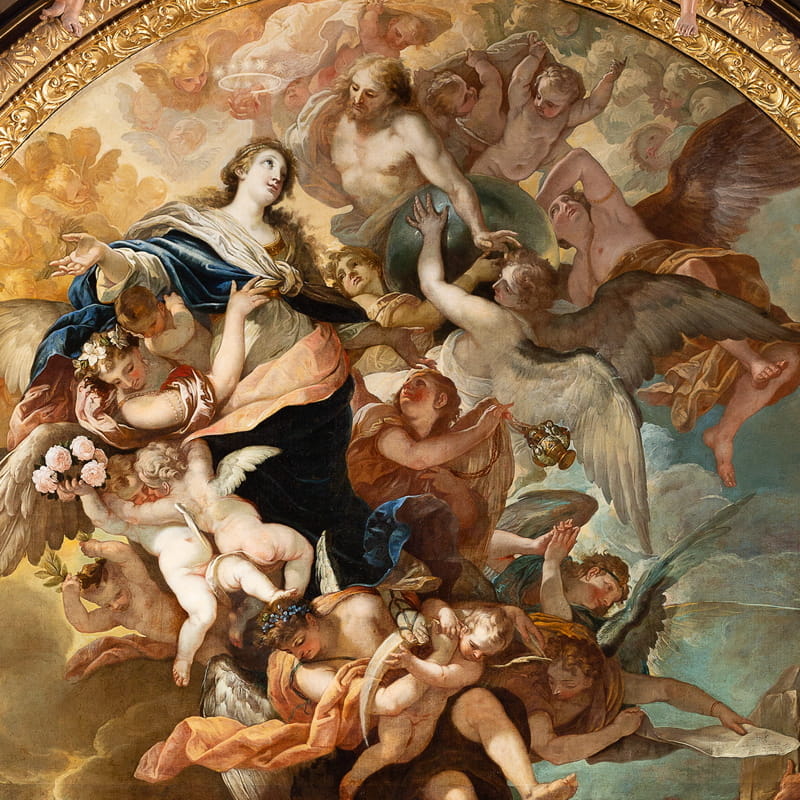
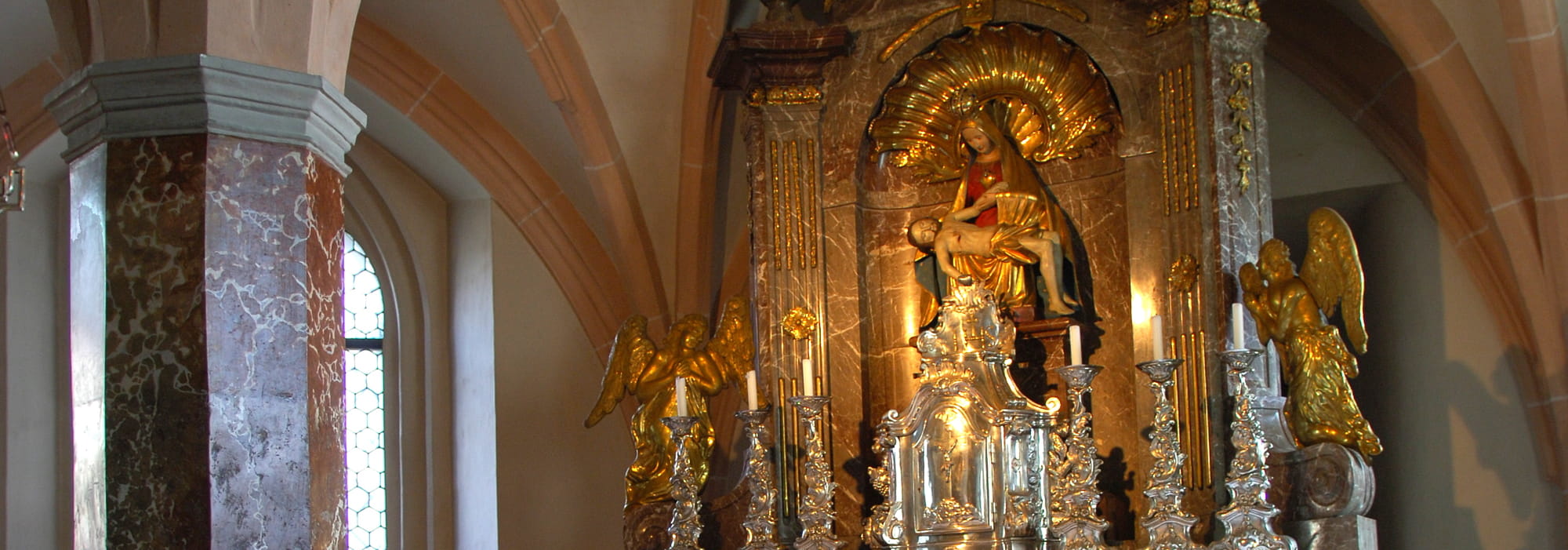
The Crypt of Abbey Church has been an inviting place of prayer and devotion since the monastery was founded:
In the main crypt under the presbytery of the Abbey Church, the Göttweiger Pietà, a wooden sculpture from the middle of the 15th century, reworked in 1880, is located on the altar of mercy (Empire period 1804).
The pilgrimage tradition, which was interrupted in 1784, was resumed in 1988. In the southern crypt room (“Altmanni Crypt”) is the Altmanni shrine, a reliquary made in 1668 with silver filigree decoration and the relics of the saint, an epitaph created by Konrad Osterer in 1540 with a reclining figure of St. Altmann.
The ceiling painting by Kremser Schmidt, the vision of Ezekiel, thematically matches the convent crypt below from 1638.
Further abbot epitaphs can be found in the church vestibule. Ernst Grandegger created 15 embossed copper panels with scenes from the life of St. Altmann in 1965. There is a small organ positive by Arnulf Klebel in the crypt.
The path leads through the northern crypt room (baptistery and confession chapel) into the preserved Gothic cloister wing, which is furnished as a lapidarium, including a sandstone lion from the end of the 12th century as well as memorial and funerary epitaphs.


